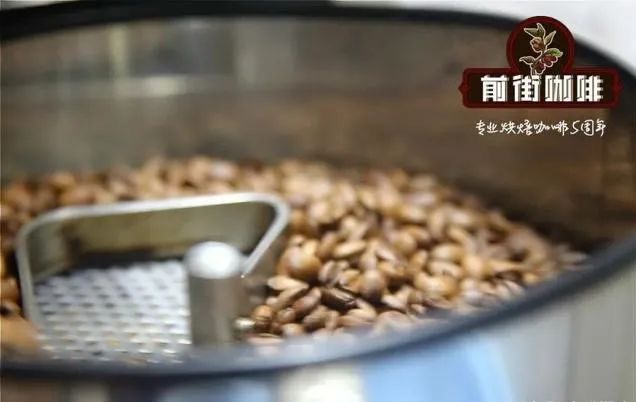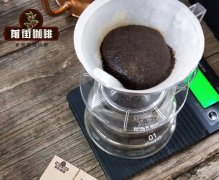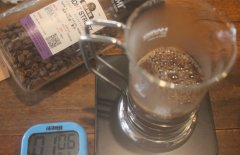How coffee beans bake raw coffee beans how to bake coffee beans baking schedule
A good cup of coffee, delicious flavor depends on three elements, 60% is the quality and type of raw beans, 30% is the degree of roasting, and 10% is the brewing method.

Interestingly, the aroma and taste of coffee are produced only after roasting; during roasting, the water content of the coffee beans evaporates, the weight is reduced, the color is deepened, the volume is expanded, and the oil containing aroma is slowly released. In addition, a large amount of chlorogenic acid originally contained in raw beans gradually disappeared, replaced by fruit acid, and its taste varied with the length of baking time.
Baking is divided into three main stages: dehydration, mena (caramelization) reaction, and flavor development:
Dehydration occurs at the rewarming point, when the moisture of the green beans begins to evaporate and pressure begins to build up inside the beans.
When green beans begin to turn brown, it means that the Mena reaction begins, and many gases are produced at this time, including carbon dioxide, water vapor, etc. When the internal pressure is high enough to break through the cell wall, it expands, known as the first explosion; in addition to bean color, flavor development also occurs in the Menard reaction.
After the first explosion, roasting changes from endothermic (absorbing heat from the drum) to exothermic (beans releasing heat). At this point, the pores on the surface of the beans continue to increase, the oil continues to move from the bean core to the surface, the color continues to darken, and the flavor gradually develops and forms.
The degree of roasting is usually based on the characteristics of the coffee beans themselves, and the corresponding flavors are:
Very light baking (Light) no flavor and concentration at all, beans are not ripe, still green taste, used in most experiments, not suitable for grinding drinking.
Cinnamon beans are very similar in color to cinnamon, also known as cinnamon roast, high in acidity, slightly aromatic, often used to brew American coffee.
Medium roast (Media) color is dark, easy to extract the original flavor of coffee beans, taste sour with bitter, commonly used in American or special coffee.
Medium and deep roast (High) taste rich, acid bitter balance, suitable for Blue Mountain and Gili Mazaro coffee, in Japan, Northern Europe high acceptance.
City Roast, also known as City Roast, has low acidity and strong bitterness, showing coffee flavor, suitable for Colombia and Brazilian coffee, loved by the general public.
Deep roast (Full City), also known as whole city baking, no sour, mainly bitter, bitter will be aggravated, but high-quality beans will have sweet. For iced coffee, black coffee, for Central and South American people like.
French roast (French) slightly black color, bitter strong, with smoky aroma, suitable for steam pressure boiler coffee.
Italian roast, also known as Italian roast, the deepest degree of roasting, beans black and transparent, surface oil oozing, bitter and very strong burnt taste. Coffee beans have been severely carbonized, different coffee beans taste has been difficult to distinguish, suitable for Italian espresso.
To sum up, the longer the coffee beans are roasted, the lighter the sour taste, the stronger the bitterness, the less caffeine content, and the fat and thin, all according to personal preference.
Important Notice :
前街咖啡 FrontStreet Coffee has moved to new addredd:
FrontStreet Coffee Address: 315,Donghua East Road,GuangZhou
Tel:020 38364473
- Prev

A brief introduction to the History of Coffee in Manor Coffee in Panama
Panama | BOP Manor Geisha 2011 Best Panama (Panama) Champion Manor. Panamanian miniature Manor, the representative of Love Sage Manor, became famous in 2011 with a water-washed geisha defeating the victorious Emerald Manor, and continued to achieve good results in the competition for several years. With a high score of 91-93 on the cup test, the rare sun-tanned geisha is not as well-known as water washing, but full of characteristics
- Next

Several brewing methods of coffee which kind of coffee brewing method good coffee brewing steps
Brewing coffee is a beautiful art of action, and it is also the last mile to taste delicious coffee and open up the sensory experience. Here are a few common ways to brew coffee to kick-start our aesthetics of life: espresso (Espresso) is made with hot water at about 90 degrees Celsius and 9 atmospheric pressure (bar) made by compacted coffee pressed powder, usually in the form of a cup.
Related
- Beginners will see the "Coffee pull flower" guide!
- What is the difference between ice blog purified milk and ordinary milk coffee?
- Why is the Philippines the largest producer of crops in Liberia?
- For coffee extraction, should the fine powder be retained?
- How does extracted espresso fill pressed powder? How much strength does it take to press the powder?
- How to make jasmine cold extract coffee? Is the jasmine + latte good?
- Will this little toy really make the coffee taste better? How does Lily Drip affect coffee extraction?
- Will the action of slapping the filter cup also affect coffee extraction?
- What's the difference between powder-to-water ratio and powder-to-liquid ratio?
- What is the Ethiopian local species? What does it have to do with Heirloom native species?

